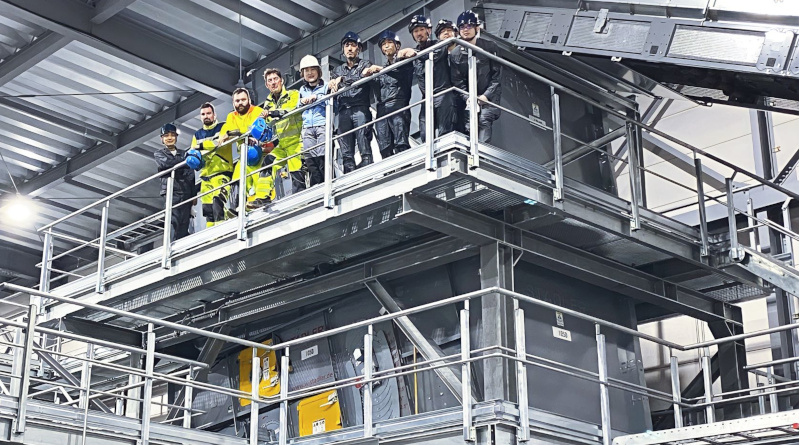Stadler designs and installs light packaging sorting plant for TBM in Yokosuka, Japan
TBM is a Japanese company specialised in the development of environmentally friendly materials and resource recycling models. Its flagship product is the material Limex, a limestone-based material claimed to be an alternative to plastic and paper that can be used in the production of a wide variety of products. Once used, it can be recycled to produce new plastic alternative materials. These characteristics have earned Limex the Asia-Pacific Stevie Award 2017 in the category of Innovation in Energy & Sustainability.
As part of its strategy to accelerate the use of Limex products and reduce consumption of natural resources, TBM commissioned Stadler to design and install a new state-of-the-art sorting plant. The facility uses the latest technologies to separate Limex and plastic light packaging, which is recycled into pellets for use in the production of packaging. The plant is part of a collaboration between TBM and the city of Yokosuka to promote the collection and recycling of plastic waste and Limex for the entire city and surrounding areas.
The sorting plant receives bales of light packaging made of plastic materials and Limex, and sorts them into metals, PET, PP, PE, PS, and mixed plastics for RDF, a 2D fraction and fines. The sorted output materials are stored in bunkers, and the 3D PET, PP, PE, PS, and mixed plastics for RDF are subsequently fed to a baling press. The plant uses the latest technologies to achieve the high quality required to recycle the output products. These include Stadler’s double-deck ballistic separator, 2.9 m wide high-speed conveyors and bunker system, as well as five Near-Infrared (NIR) automated optical sorters.
Due to the particular characteristics of the sorted materials and the space limitations in the building housing the plant, the project required some innovative thinking. “The plastic material we are processing at the plant is extremely light,” explains Ursina Mutzner, International Sales at Stadler. “When we ran trials with similar materials at our Test Centre in Germany, we saw that the paddles in the double deck ballistic separator needed to be inclined more than the maximum 25 degrees the machine is designed for. So, when we designed the plant, we decided to place the ballistic separator on a slightly sloping steel structure in order to achieve the inclination of the paddles required to ensure the best sorting quality.”
Takuya Sugiyama, Division Head, Recycling Plant Business, TBM, adds: “The plant roof is quite low, so there wasn’t much space between the ballistic separator and the ceiling. At first, we thought we might have to remove part of the roof to place the machine, but Stadler’s commissioning team made the installation without any additional work.”

